Most Vineyard visitors believe they have seen the Gingerbread cottages after they have walked through Trinity Park and around the Tabernacle. However, the Camp Ground consists of 315 cottages spread across 34 acres.
The six cottages that will be featured Wednesday, August 11, on the 15th Martha’s Vineyard Camp Meeting Association’s Cottage Tour, are in two smaller circles just behind the hustle and bustle of Trinity Park. Two of the cottages are across the street from each other on Rural Circle and the other four are in Forest Circle, a smaller, more intimate conclave just steps away from the Rural Circle homes.
The cottages on this year’s cottage tour were all built between 1864 and 1867 during an explosive building boom that began several years after the first cottage was built in 1860. Each has at least one second floor balcony with double doors. These doors provide a way to get large furniture pieces into cottages since many have narrow, twisting staircases. During most summers, they also provide good airflow upstairs.
The Moore Cottage is winterized for four-season occupancy. The Warburton and Dagnall cottages have the original tongue and groove boards visible throughout; however, the Dagnall cottage has unusual modified gothic windows and a small tower while the Warburton cottage has the more traditional gothic windows and two upstairs balconies. The West/Ziebarth cottage is a study in contrasts: the two front rooms on each floor are entirely original, while the kitchen and bath were modernized a few years ago. The Lennon cottage has an unusually large dining room with a walk-in pantry and a kitchen at one end. The Hight cottage is surrounded on three sides by a spacious porch and has beautiful original filigree separating the two front rooms and over a doorway into the kitchen.
The opportunity to see the inside of the privately owned campground cottages occurs only one day each year. Admission to all six cottages and to the Cottage Museum is $25 and will benefit the Tabernacle Restoration Fund. Tickets will be sold at the Tabernacle entrance from 10 a.m. to 2 p.m., and the cottages will be open until 3 p.m. Delicious refreshments will be served at the Tabernacle during the hours of the tour.
Here is a guide to the cottages on the 2010 Camp Ground Cottage Tour on August 11:
1 Rural Circle Owners: Russ and Sally Dagnall
The Dagnall cottage was built in 1866 with an “L” shaped footprint instead of the usual “shotgun” design. It has modified gothic windows and a small tower that was added later. None of the original cottages had kitchens. The current Dagnall kitchen was a stand-alone cookhouse that was later attached to the cottage. The original hatches used for venting are still visible above the counter. A distant relative of the owner was a missionary in Africa in the late 1800s and the cottage was named Ikayalami, which is Zulu for “my home.”
In 2007, the Dagnalls modernized the kitchen and bath and replaced the asbestos shingles on the outside with the more historically correct vertical tongue and groove boards. Sally Dagnall is the author of two books that chronicle the history of the MVCMA, including Circle of Faith, published this year. Several prints made from old stereoviews adorn the walls of her cottage.
76 Rural Circle Owner: Tomm Warburton
Tomm Warburton’s parents purchased the Rural Circle cottage in 1960. Prior to that, his father’s family owned two of the other cottages (West and Dagnall) on the 2010 tour. The house has five entrances, including the double gothic doors on the front porch. The opening from the living room to the dining room is a large gothic arch which mirrors that of the front doors. The original vertical boards are visible in every room and many of the light fixtures are also original. The cottage was built in 1866; the pedestal sink was probably installed when the bathroom was added to the home circa 1900.
4 Forest Circle Owners: Doug West and Irene Ziebarth
The Wests celebrated 50 years of cottage ownership with a large family gathering last month. A new quarterboard with the cottage name, Reunion, was installed over the front doors to commemorate the occasion. The windows and double doors on both levels of the 1866 cottage façade are Romanesque. A rounded arch cut into the separating wall of the first two downstairs rooms is another architectural feature typical of Camp Ground cottages. The kitchen and bathroom have been modernized but blend in beautifully with the rest of the cottage. The original backdoor is still pr esent, and includes a very low doorknob that Doug West and his brother used when they were children.
6 Forest Circle Owner: Barbara Moore
Bobbie Moore described her cottage as “a lonely, beat-up little place that needed someone to bring it back to life. It had green and white striped walls, and bad flooring, so we stripped and painted and continue to do so.” Now the floors in the 1866 cottage are refinished pumpkin pine, and the walls are nicely painted. All of the rooms are spacious; there is a furnace installed in the first floor so unlike most Camp Ground cottages, this one can be inhabited all year long. The owner has a collection of SSA Ferry Schedules posted on her dining room bulletin board including all years but one since 1973!
13 Forest Circle Owners: John and Sally Lennon
John and Sally Lennon have only owned their 1867 cottage for two years, but they have transformed it into a beautiful summer home. The living room has original vertical tongue and groove walls and four Romanesque windows. The kitchen and walk-in pantry is at one end of an unusually large dining room. The new bathroom is accessed directly from the kitchen instead of outside via the side porch — an improvement of both comfort and convenience. There is a small room with a daybed off the dining room that can also be seen through a “mystery door” on the stairs. There are three bedrooms on the second floor, including one “dorm” room large enough for four beds.
17 Forest Circle Owners: Jean and Steve Hight
Jean Hight spent all her summers on East Chop before she and husband Steve purchased their Camp Ground cottage, Weathering Hights, in 2004. The house has a wrap-around porch with unusual circle gingerbread on the railings. After passing through the double gothic doors, the original ceiling-high beading that separates the front from the back section of the living room can be seen. With the exception of the insulated bedroom off the kitchen, the walls of the cottage are original tongue and groove boards. In most Camp Ground cottages, the stairs go up on one side of the living room. In the Hight cottage, the stairs are found in the kitchen, perhaps because records show that there were once two houses at 16/17 Forest Circle that were combined into one.

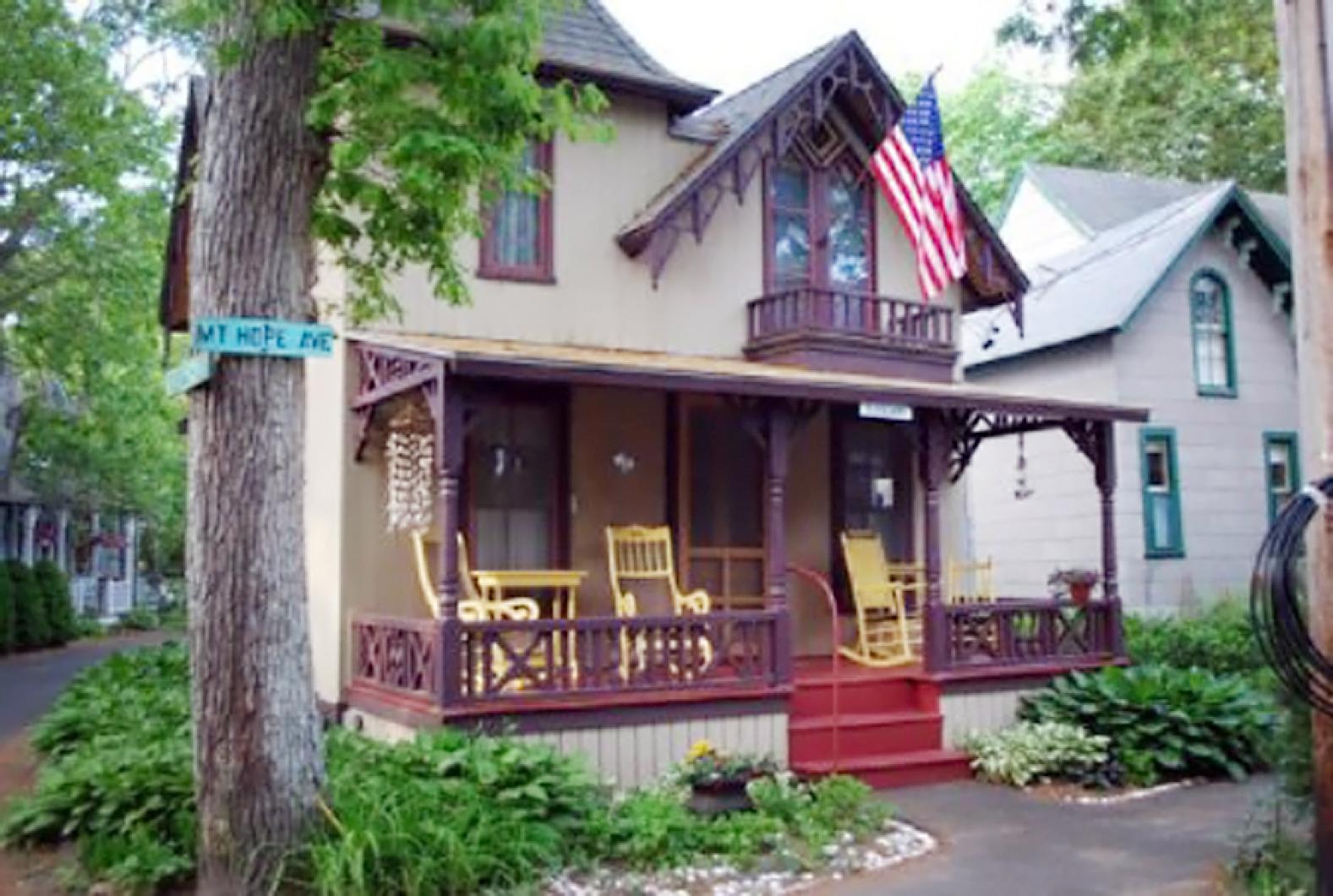
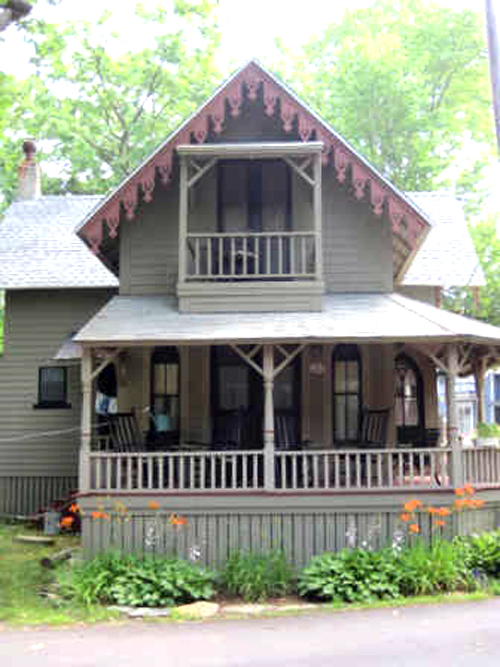
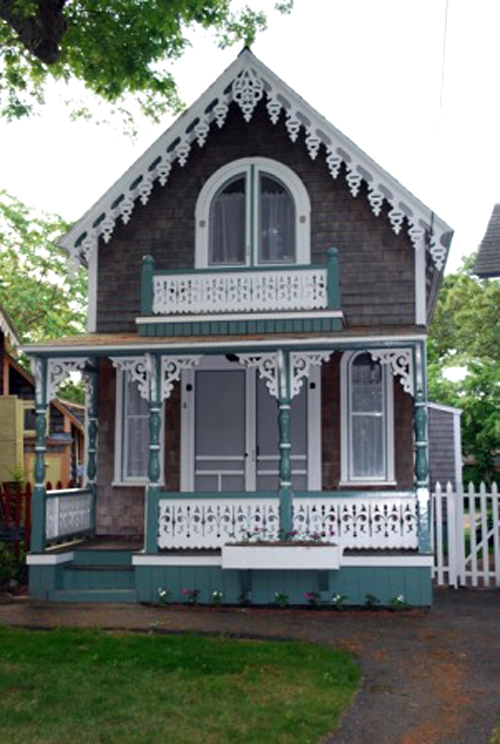
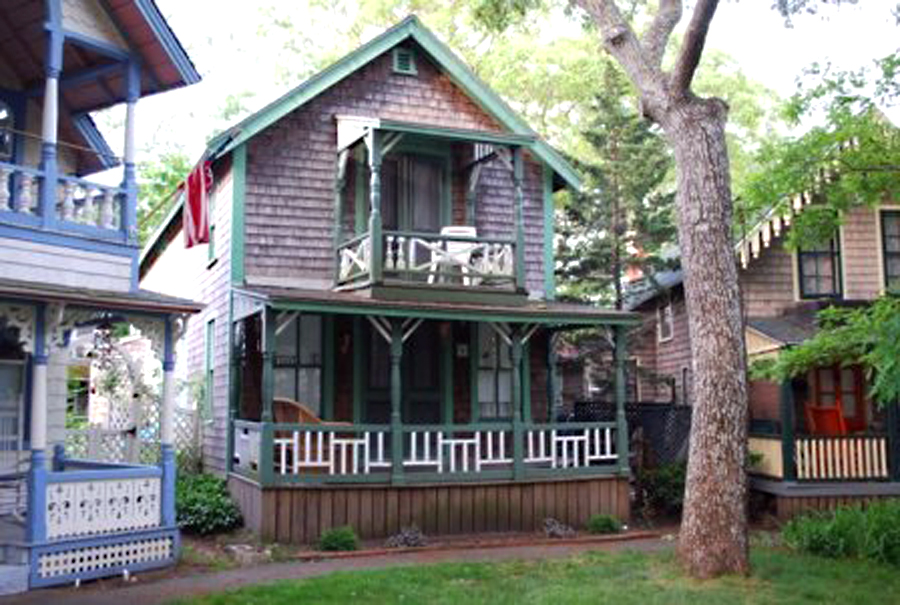
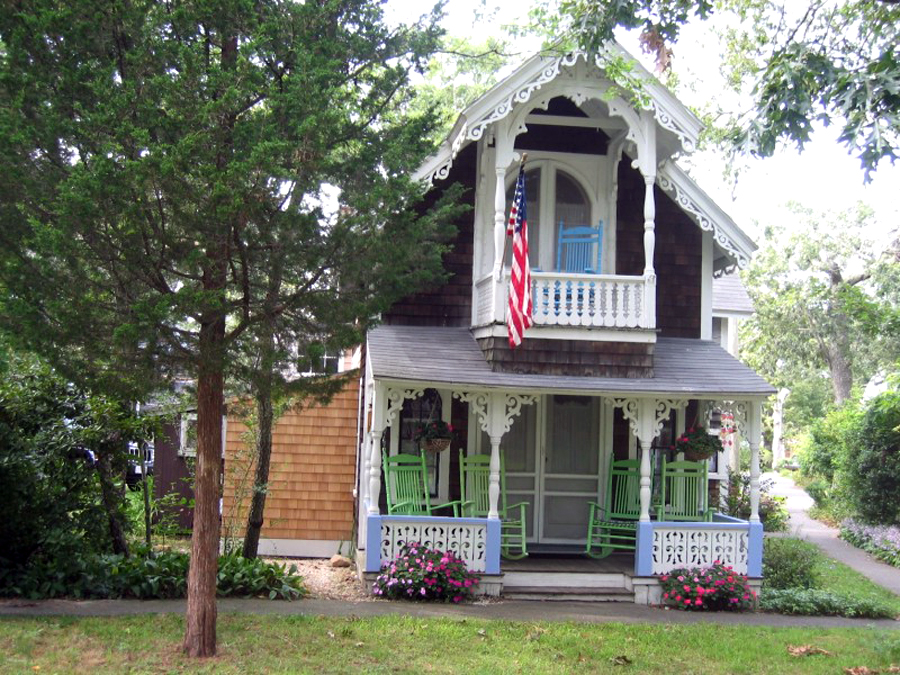
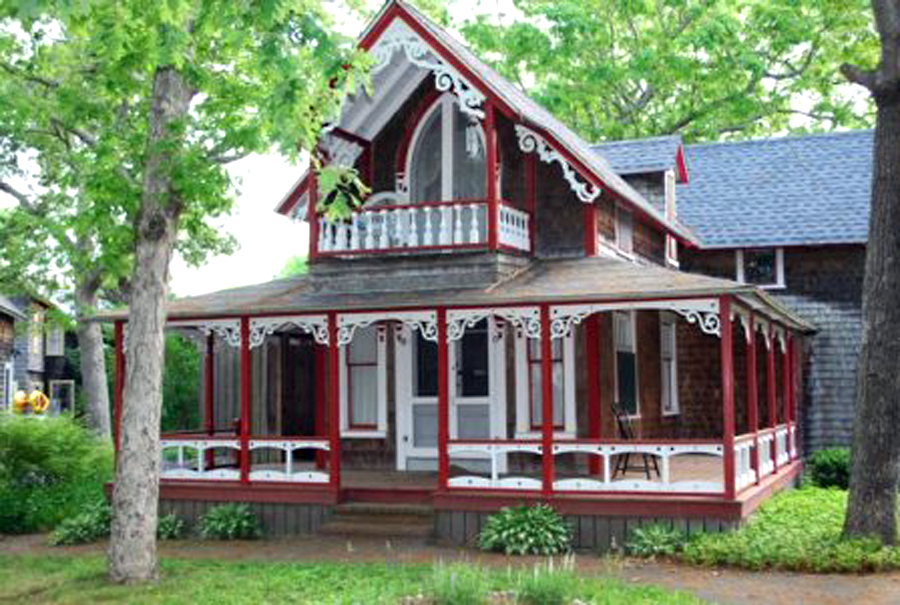





Comments
Comment policy »